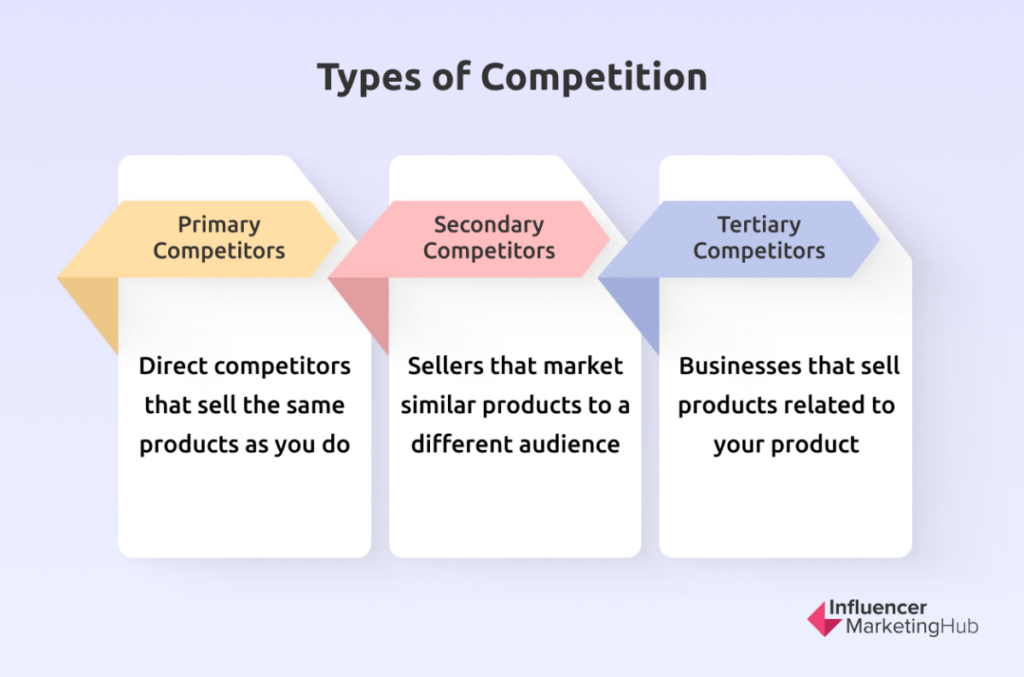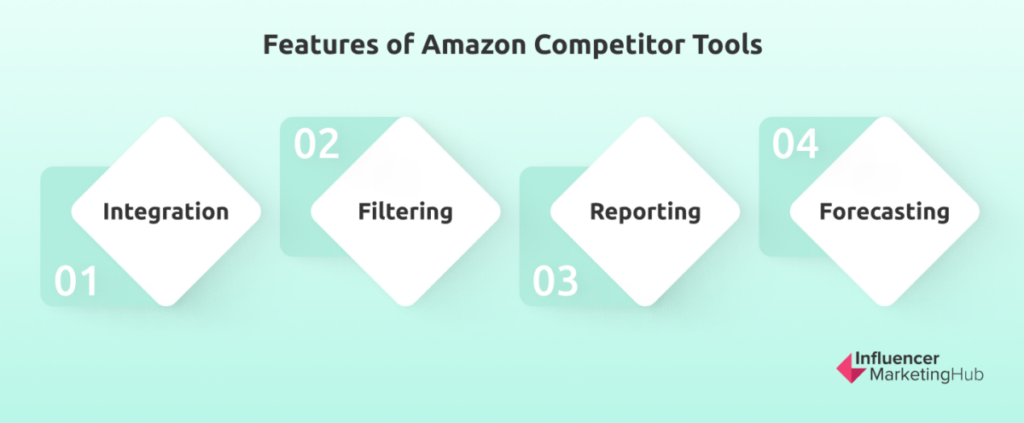Amazon is the largest retail platform any business can use to sell products—and as a result, it’s one of the most competitive places on the internet. It’s not enough to create a quality product worth selling; you have to learn what your competitors are doing to make your Amazon business profitable. One thing that can make this process far easier is by using Amazon competitor analysis tools.
- What Are Amazon Competitor Analysis Tools?
- Why Do You Need to Keep Track of Your Amazon Competitors?
- How To Identify and Define Your Amazon Competitors
- How Do Amazon Competitor Analysis Tools Work?
- What Are the Different Amazon Competitor Tools You Can Use In 2024?
- 1. AMZScout
- 2. Jungle Scout
- 3. Helium 10
- Final Thoughts
- Frequently Asked Questions
What Are Amazon Competitor Analysis Tools?
Amazon competitor analysis tools are software solutions or platforms that enable you to evaluate how well your products are performing against their closest competitors. Using these tools gives you a better picture of the competitive landscape in your product niche or market.
As a seller, this gives you insights into current market gaps and how you can fill them. You can then use this data for optimizing your sales strategy and achieving better revenue.
Why Do You Need to Keep Track of Your Amazon Competitors?
It’s always in a business’s best interests to conduct competitor research. You want to learn what’s working for your competition and improve on them with your own strategies or avoid mistakes that they’re making.

Source: amazon.com
But Amazon is a large platform. It will cost you significant time and effort to go through every possible competitor and their products, and even more to organize and interpret that data into something actionable.
Amazon competitor analysis tools—and competitor research in general—can drastically simplify this process, allowing you to arrive at the insights that you should be learning from your competitors more quickly. With the right information, you gain better insights into your own products. Consequently, you can better tailor your sales strategy to meet customer demands.
How To Identify and Define Your Amazon Competitors
Fortunately for sellers, Amazon isn’t stingy when it comes to product data. You don’t even need a specific tool to find products that are similar to yours. But for intelligent Amazon competitor analysis, you need to be familiar with how to find your competitors and categorize them appropriately.
These two steps are:
Keyword Research
Keywords are the heart of what makes your product visible and profitable on Amazon. Keyword research is crucial since it answers a specific question: “How are my customers finding my products?”
With keyword research, you gain insights into how your customers find you and how well you’re doing compared to your competitors. Using this information can help you optimize the keywords you use in your listings, ensuring that your products are more likely to be found on Amazon.
Because your competitors are likely using the same keywords, you can further refine your keywords to ensure they match what your audience is using on Amazon. It also gives you a peek into the overall demand for your particular product as well as ideas on how to stand out on the platform.
Competitor Categorization
Categorizing identified competitors helps you understand the market demand for your product; but more importantly, it gives you an idea of where that demand is coming from. This gives you more opportunities to potentially boost your sales.
There are three types of competition that you should consider:

By categorizing your competition this way, you avoid wasting time researching competitors that may not offer valuable data for you to act on. This also helps with organizing the data that you'll gather, potentially giving you easier ways to cross-reference them for better insights.
How Do Amazon Competitor Analysis Tools Work?
The simplest way to summarize how Amazon competitor analysis tools work is that they’re highly efficient data aggregators. It’s impossible to manually sift through and search through the millions of sellers and listings on the Amazon platform alone, so tools like these make that job significantly easier.
Amazon competitor tools offer various features, such as:

- Integration: how well the tool works with your own competitor research methodology
- Filtering: how precise you can tailor your search for specific products, competitors, and niches
- Reporting: how the tool presents the data it finds after it’s processed your specific query
- Forecasting: how the tool can predict costs, revenue, and overall profit from the data it collects
These features are usually included in all Amazon competitor analysis tools, though their usefulness to your business will vary based on your goals and research methods. However, there are common instances where these tools will always be helpful to you: for example, with fulfilled-by-Amazon services.
What Are the Different Amazon Competitor Tools You Can Use In 2024?
There are two methodologies you can follow to analyze your competitors on Amazon. There’s the direct route, which uses tools specifically designed for Amazon sellers to get more information on their performance. The next is the indirect route, which is gathering information from other places that may be outside of Amazon.
Flexibility is key to creating effective sales strategies and conducting reliable competitor analysis, so you should use a combination of the two methods if your time and resources permit it. Otherwise, you can start with one tool and gradually integrate others over time. Here are the top Amazon competitor tools you can use to help you stay ahead of the competition:
AMZScout is one of the more affordable Amazon competitor tools on the market, giving you different tools and functionality to build a store on the Amazon platform. Using AMZScout, you can view instant product sales and monitor competitor stock sizes to assess demand. By allowing you to monitor the competition’s stock sizes, the tool enables you to sell your products at a higher price once your competitors run out of stock. Moreover, it gives you access to a broad data set that includes date first available, net margin, bestseller tags, and minimum price. It also shows detailed listing quality scores (LQS) for all products on the platform, as well as a button that lets you easily generate keyword ideas. It offers a browser extension for easier research and comes with courses that can help optimize your Amazon sales process without overwhelming you with data. Notable features of this tool include: Jungle Scout is widely regarded as the gold standard of Amazon research tools, with a variety of features all targeted toward comprehensive product and competitor research. While not a tool recommended for beginners, it’s a platform that should always be considered if you’re looking to kick-start your competitor research down the line. Notable features of this tool include: Ultimately, the best reason for any business to invest in Jungle Scout as a tool is its robust suite of product research features, real-time access to customer data, and a wide variety of different metrics and information that you can use in your sales strategies. It requires a certain amount of know-how to use (especially for the data that it collects), but proper use and mastery of this tool will pay off. Jungle Scout can increase your profits as an Amazon seller, but be prepared to invest the time and effort necessary to make the most out of its features. While it can certainly help you stay competitive on the platform, simply buying and using this tool won’t do it for you. Helium 10 is possibly one of the few Amazon tools that any seller can use to manage their business end-to-end. It comes with a comprehensive suite of features that can help with inventory management, competitor analysis, sales analytics, email automation, and so much more. All of these benefits come from a single subscription as well, blending both access and ease of use in one platform. Notable features of this tool include: Helium 10’s suite of tools is even more accessible with its beginner-friendly Starter packages, which give you access to the core features above for limited uses. If you’re willing to shoulder the costs by upgrading your plan over time, you’ll eventually gain hundreds of insights into your business and your competitors per day. As a competitor research tool, Helium 10 does an excellent job at giving you the data that you want to scale and stay ahead. If you can deal with its steep learning curve when learning the tools, you’ll have a reliable way to keep track of your competitor’s performance as well as your own.1. AMZScout

2. Jungle Scout

3. Helium 10

Final Thoughts
Amazon competitor analysis is a crucial part of helping you get insights into what your competitors are doing—and how you can surpass their performance. This analysis allows you to not only outperform them but also surpass goals that you’ve already set for yourself.
Your innovation will be driven by data, allowing you to maintain consistent quality and performance even when measured against your fiercest competition. Combined with the right tools, your business can stay ahead on one of the most competitive retail platforms on the internet.
Frequently Asked Questions
What is competitor analysis?
In a nutshell, competitor analysis refers to the process of researching your major competitors and identifying the marketing strategies they’re using to gain valuable insights that you can leverage to strengthen your marketing strategy, improve your offerings, and identify your strengths and weaknesses.
Why is competitor analysis crucial to growing my business?
Competitor analysis allows you to gain a deeper understanding of the competition. It can help you identify any gaps that you can potentially address, what your competitors are doing right, what their weaknesses are, and how you can outperform them to gain a competitive edge.
What tools can I use for Amazon competitor analysis?
We recommend the following tools for Amazon competitor analysis. Note that each tool comes with a unique set of features that are designed to help you conduct more effective Amazon competitor analysis:
- AMZScout
- Jungle Scout
- ZonGuru
- Helium 10



